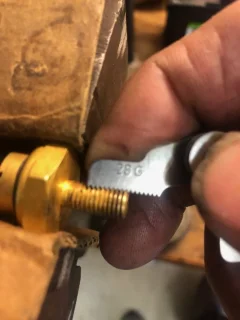- Joined
- Jan 18, 2020
- Messages
- 649
I might be wrong, but I think I read somewhere a couple of days ago that overtightening the zener kills it.
In your first post you said that system voltage was less with engine running than with stopped engine.
You've also found that the alternator is lighting a headlamp (?) bulb at low revs.
To me it looks like the power from the alternator don't reach the battery. The battery is then drained by the ignition system.
Two possible reasons. Either a bad connection restricting current flow, or loss by current going another way to earth.
Being a lazy bastard, I should replace the rectifier and zeners with a modern regulator/rectifier. Did it last week on a BSA. But found that it started easily and worked well in emergency mode with the MC2 capacitor and disconnected battery. Not charging when battery connected. Problem solved, faulty ignition switch.
In your first post you said that system voltage was less with engine running than with stopped engine.
You've also found that the alternator is lighting a headlamp (?) bulb at low revs.
To me it looks like the power from the alternator don't reach the battery. The battery is then drained by the ignition system.
Two possible reasons. Either a bad connection restricting current flow, or loss by current going another way to earth.
Being a lazy bastard, I should replace the rectifier and zeners with a modern regulator/rectifier. Did it last week on a BSA. But found that it started easily and worked well in emergency mode with the MC2 capacitor and disconnected battery. Not charging when battery connected. Problem solved, faulty ignition switch.

